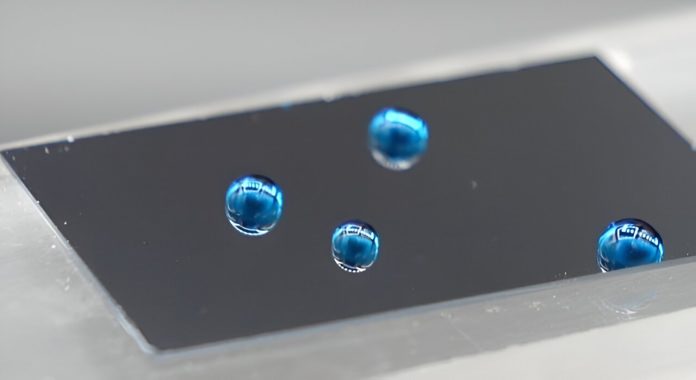
University of Sydney scientists have made an exciting discovery that could change the way we view surfaces.
They found that when oil molecules are thinly spread on a solid surface, they can act almost like liquid.
This breakthrough could lead to creating non-stick materials that are better for our planet.
Published in the journal Angewandte Chemie, the study was a collaboration involving Dr. Isaac Gresham, Professor Chiara Neto, Seamus Lilley, and experts from other institutes.
What’s the Big Deal?
Usually, materials that don’t stick, like the coating inside some pans or the surface of certain textiles, are made using chemicals called perfluorinated polymers (PFAS).
These are nicknamed ‘forever chemicals’ because they take a very long time to break down and can be harmful to the environment.
The team at the University of Sydney looked at a different type of non-stick coating known as SCALS (slippery covalently-attached liquid surfaces). These are made from materials like silicones or polyethylene glycol, which are more eco-friendly because they break down into harmless substances.
Professor Neto explained that these SCALS are great for many applications. They can repel water droplets easily, prevent unwanted deposits, and even resist ice and bacteria. This could bring us closer to things like self-cleaning windows or better anti-ice systems.
Understanding the Science
The team was particularly interested in how thin they could make these SCALS while keeping them slippery. It’s a bit like asking: “How little oil can you use in a pan before things start to stick?”
These SCALS are incredibly thin, about 10,000 times finer than a human hair. At such tiny scales, it’s hard to even define what a “liquid” is. That’s why the researchers used two special techniques to study these layers.
The first one measured the size and stretchiness of individual molecules, while the second one looked at how long and packed these molecules were on the surface.
They found a “Goldilocks zone” for these SCALS. If the molecules were too short or spaced too far apart, the surface became sticky. But if the molecules were too long or packed too tightly, they couldn’t act like a liquid anymore.
To prove that these SCALS were really acting like a liquid, the team measured how quickly a small molecule could move inside the layer.
In liquids, molecules can move around freely, but in solids, they can’t. The best movement, or “diffusion”, was seen in the Goldilocks zone.
This research doesn’t just tell us about a new non-stick surface. It gives scientists a blueprint for how to design even better and greener slippery surfaces in the future.
By understanding the perfect balance of molecule length and spacing, we can aim to create effective and environmentally-friendly coatings.
In simpler terms, think of these coatings as the perfect pancake recipe: not too thick, not too thin, but just right.
And, just like the perfect pancake, these coatings could make a lot of people very happy, especially those who care about the environment.
Follow us on Twitter for more articles about this topic.
Source: University of Sydney.



